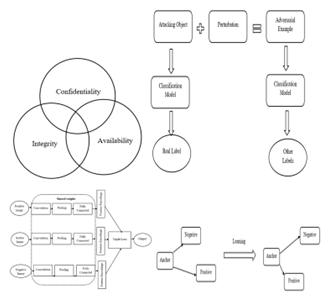Study on Network Virtual Printing Sculpture Design using Artificial Intelligence
DOI:
https://doi.org/10.17762/ijcnis.v15i1.5694Keywords:
Deep Learning, Siamese neural networks, Adversarial attack, Transfer learning, Imagenet, Chinese Sculpture, Graph convolutional networks.Abstract
Sculptures are visionaries of a country’s culture from time immemorial. Chinese sculptures hold an aesthetic value in the global market, catalysed by opening the country's gates. On the other hand, this paved the way for many duplicates and replicates of the original sculptures, defaming the entire artwork. This work proposes a defrauding model that deploys a Siamese-based Convolutional Neural Network (S-CNN) that effectively detects the mimicked sculpture images. Nevertheless, adversarial attacks are gaining momentum, compromising the deep learning models to make predictions for faked or forged images. The work uses a Simplified Graph Convolutional Network (SGCN) to misclassify the adversarial images generated by the Fast Gradient Sign Method (FGSM) to combat this attack. The model's training is done with adversarial images of the Imagenet dataset. By transfer learning, the model is rested for its efficacy in identifying the adversarial examples of the Chinese God images dataset. The results showed that the proposed model could detect the generated adversarial examples with a reasonable misclassification rate.
Downloads
Published
How to Cite
Issue
Section
License
Copyright (c) 2023 International Journal of Communication Networks and Information Security (IJCNIS)

This work is licensed under a Creative Commons Attribution-NonCommercial-ShareAlike 4.0 International License.




